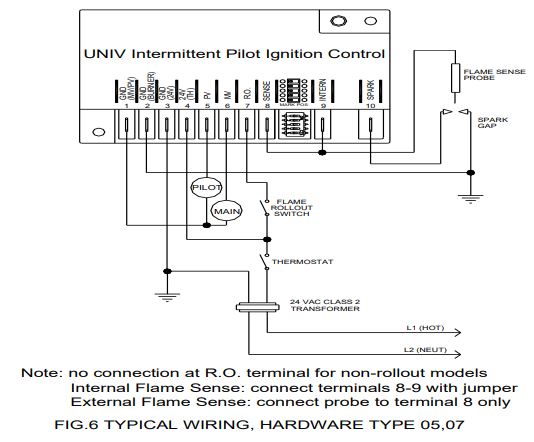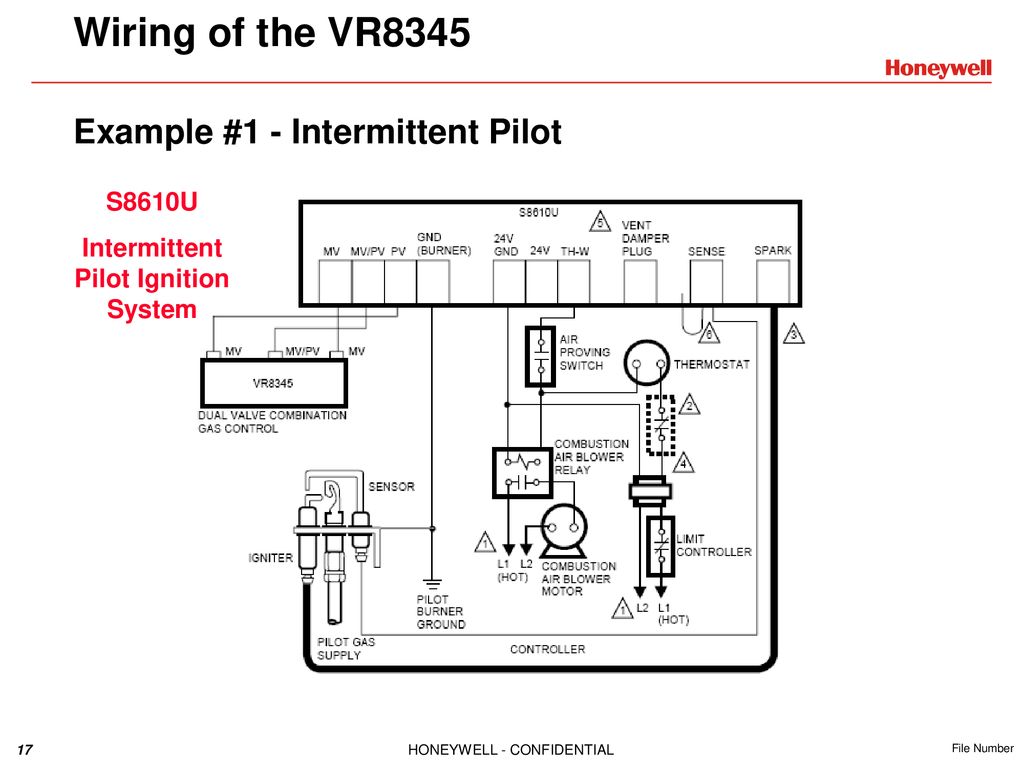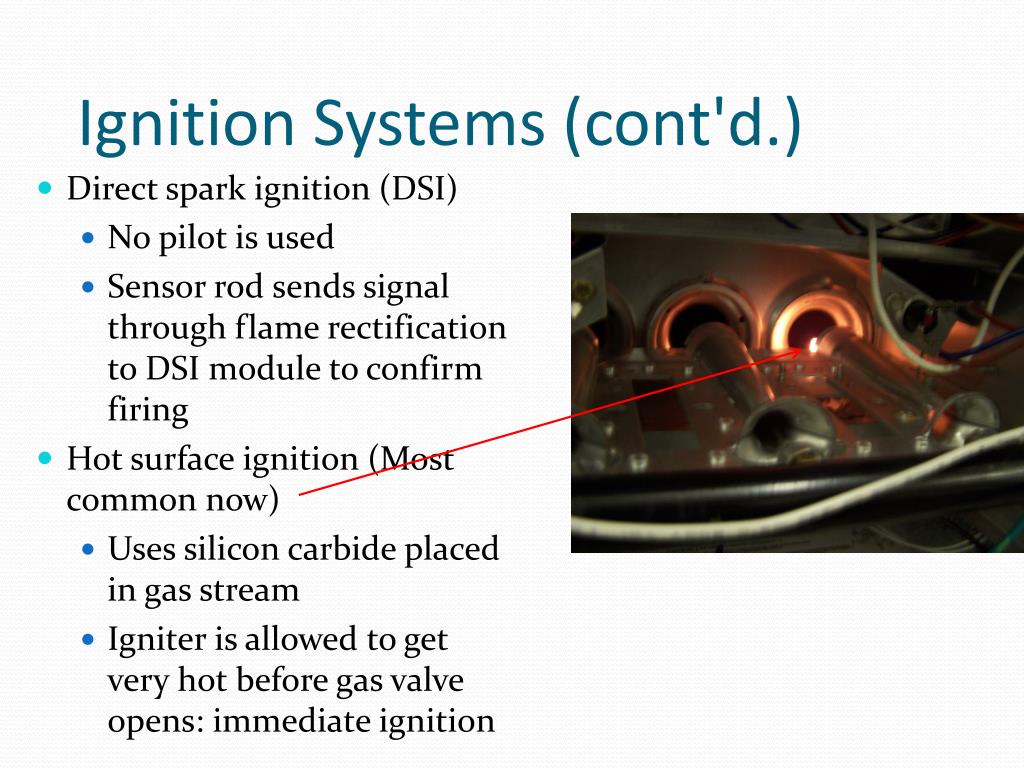What Is An Intermittent Pilot Ignition System

Imagine this: it's a chilly evening, and you turn up the thermostat, expecting the cozy warmth of your furnace to kick in. But instead of that familiar whoosh and gentle heat, you're met with... nothing. Or worse, it tries to start, sputters, and then gives up. This frustrating scenario often points to a problem with your furnace's ignition system, and in many homes, that system is an Intermittent Pilot Ignition (IPI) system.
Understanding Intermittent Pilot Ignition (IPI) Systems
An IPI system is a type of ignition system used in many gas appliances, including furnaces, water heaters, and some fireplaces. Unlike older systems with a constantly burning pilot light, the IPI system only lights the pilot flame when there's a call for heat. This makes it more energy-efficient, as it doesn't waste gas keeping a pilot flame burning 24/7. When your thermostat calls for heat, the IPI system goes through a sequence:
- Ignition Module: This is the brains of the operation. It controls the entire ignition sequence.
- Pilot Valve: Opens to allow gas to flow to the pilot burner.
- Spark Igniter: Creates a spark to ignite the pilot gas.
- Flame Sensor (Flame Rectification): Detects the pilot flame. If the flame is detected, the system continues to the next step. If not, it shuts down to prevent gas buildup.
- Main Gas Valve: Opens to allow gas to flow to the main burner.
If any of these steps fail, your furnace won't ignite, leaving you in the cold. Let's walk through some troubleshooting steps you can take before calling in a professional.
Safety First!
Before you begin any troubleshooting, always take these precautions:
- Turn off the power: Locate the circuit breaker that controls your furnace and switch it off. This is crucial for your safety.
- Turn off the gas supply: Find the gas shut-off valve near the furnace and turn it to the "off" position. The valve handle is typically perpendicular to the gas pipe when closed.
- Ventilate the area: If you smell gas, immediately evacuate the area and call your gas company from a safe location. Do not use any electrical switches or devices, as they could create a spark.
- Wear appropriate safety gear: Safety glasses and gloves are recommended.
When in doubt, call a qualified HVAC technician or gas professional. Working with gas and electricity can be dangerous, and it's always better to be safe than sorry.
Troubleshooting Steps
1. Check the Power Supply
A simple but often overlooked step. Make sure your furnace is receiving power.
- Verify the Circuit Breaker: Go back to your circuit breaker panel and ensure the furnace breaker hasn't tripped. If it has, reset it. If it trips again immediately, there's likely a short circuit, and you'll need to call an electrician.
- Check the Furnace Switch: Many furnaces have a separate on/off switch, usually located near the furnace itself. Make sure it's in the "on" position.
- Test the Voltage (Advanced - Professional Recommended): If you're comfortable and have experience working with electricity, you can use a multimeter to check the voltage at the furnace. Consult your furnace's wiring diagram to identify the correct terminals. However, if you're not confident, leave this to a professional.
2. Thermostat Settings
Believe it or not, thermostat issues are a common cause of furnace problems.
- Ensure the Thermostat is Set Correctly: Make sure the thermostat is set to "heat" and the temperature is higher than the current room temperature.
- Check the Batteries: Many thermostats are battery-powered. Replace the batteries if they're low.
- Clean the Thermostat: Dust and debris can interfere with the thermostat's operation. Gently clean the contacts with a soft brush.
- Check Wiring (Advanced): If you're comfortable and know what you're doing, inspect the wiring connections at the thermostat. Loose or corroded wires can cause problems. Tighten any loose connections and clean corroded ones. *Remember to turn off the power to the thermostat before doing this.*
3. Check the Air Filter
A dirty air filter can restrict airflow, causing the furnace to overheat and shut down.
- Inspect the Air Filter: Remove the air filter and hold it up to the light. If you can't see much light through it, it's dirty and needs to be replaced.
- Replace the Air Filter: Install a new air filter of the correct size and type. Refer to your furnace's manual for recommendations.
4. Look for Obvious Obstructions
Check for anything that might be blocking the air intake or exhaust vents.
- Inspect Air Vents: Ensure that supply and return vents throughout your house are open and not blocked by furniture, rugs, or other objects.
- Check Exhaust Vent: The exhaust vent (usually a PVC pipe exiting your house) can sometimes become blocked by snow, ice, or debris. Carefully clear any obstructions.
5. Observe the Ignition Sequence
With the power and gas back on (carefully!), watch the furnace's ignition sequence. This can give you valuable clues about the problem. *Be prepared to turn the gas off again if anything seems unsafe.*
- Listen for the Spark: You should hear a clicking sound as the spark igniter tries to light the pilot. If you don't hear anything, the igniter may be faulty.
- Observe the Pilot Flame: If the pilot lights, does it stay lit? If it lights briefly and then goes out, the flame sensor may be dirty or faulty.
- Listen for the Main Burner: If the pilot flame stays lit, the main burner should ignite. If it doesn't, the main gas valve may be the problem.
6. Clean the Flame Sensor (DIY - With Caution)
A dirty flame sensor is a common culprit in IPI systems. The flame sensor is typically a thin metal rod located near the pilot burner. Before proceeding, turn off the power and gas!
- Locate the Flame Sensor: Consult your furnace's manual to identify the flame sensor. It's usually a single rod positioned to be enveloped by the pilot flame.
- Remove the Flame Sensor: Carefully disconnect the wire leading to the flame sensor. Then, use a wrench or screwdriver to remove the sensor from its bracket.
- Clean the Flame Sensor: Use a piece of fine-grit sandpaper or steel wool to gently clean the surface of the flame sensor. Remove any carbon buildup or corrosion.
- Reinstall the Flame Sensor: Carefully reinstall the flame sensor, reconnect the wire, and ensure it's securely mounted.
Turn the power and gas back on and observe the ignition sequence again. If the flame sensor was the problem, the furnace should now ignite and stay lit.
When to Call a Professional
While some troubleshooting steps are safe for homeowners, certain repairs require the expertise and tools of a qualified HVAC technician or gas professional. Do not attempt the following repairs yourself:
- Gas Valve Replacement: Replacing a gas valve involves working directly with the gas supply and requires specialized knowledge and tools.
- Ignition Module Replacement: The ignition module is the brains of the system, and replacing it requires a good understanding of the furnace's wiring diagram and control logic.
- Blower Motor Repair: Blower motor repair involves electrical work and requires specialized tools and knowledge.
- Heat Exchanger Inspection: A cracked heat exchanger can leak dangerous carbon monoxide into your home. This is a serious safety hazard and requires professional inspection and repair.
- Any work involving opening the sealed gas system.
- If you smell gas at any point during the troubleshooting process. Evacuate immediately and call your gas company.
- If you are uncomfortable or unsure about any step.
Here are some specific situations where you should always call a professional:
- You smell gas, even after turning off the gas supply.
- The furnace makes unusual noises, such as banging, grinding, or hissing.
- The furnace is emitting smoke or a burning smell.
- The furnace is tripping the circuit breaker repeatedly.
- You suspect a gas leak.
- You are not comfortable performing any of the troubleshooting steps outlined above.
Preventive Maintenance
The best way to avoid furnace problems is to perform regular preventive maintenance. Here are some tips:
- Change the air filter regularly: At least every 1-3 months, or more often if you have pets or allergies.
- Schedule annual furnace maintenance: A qualified HVAC technician can inspect and clean your furnace, ensuring it's running safely and efficiently.
- Keep the area around the furnace clear: Remove any clutter or debris that could restrict airflow.
- Check the exhaust vent regularly: Ensure it's free from obstructions.
By following these troubleshooting steps and knowing when to call a professional, you can keep your furnace running smoothly and safely throughout the winter. Remember, safety is always the top priority. Don't hesitate to call a qualified technician if you're unsure about anything.










